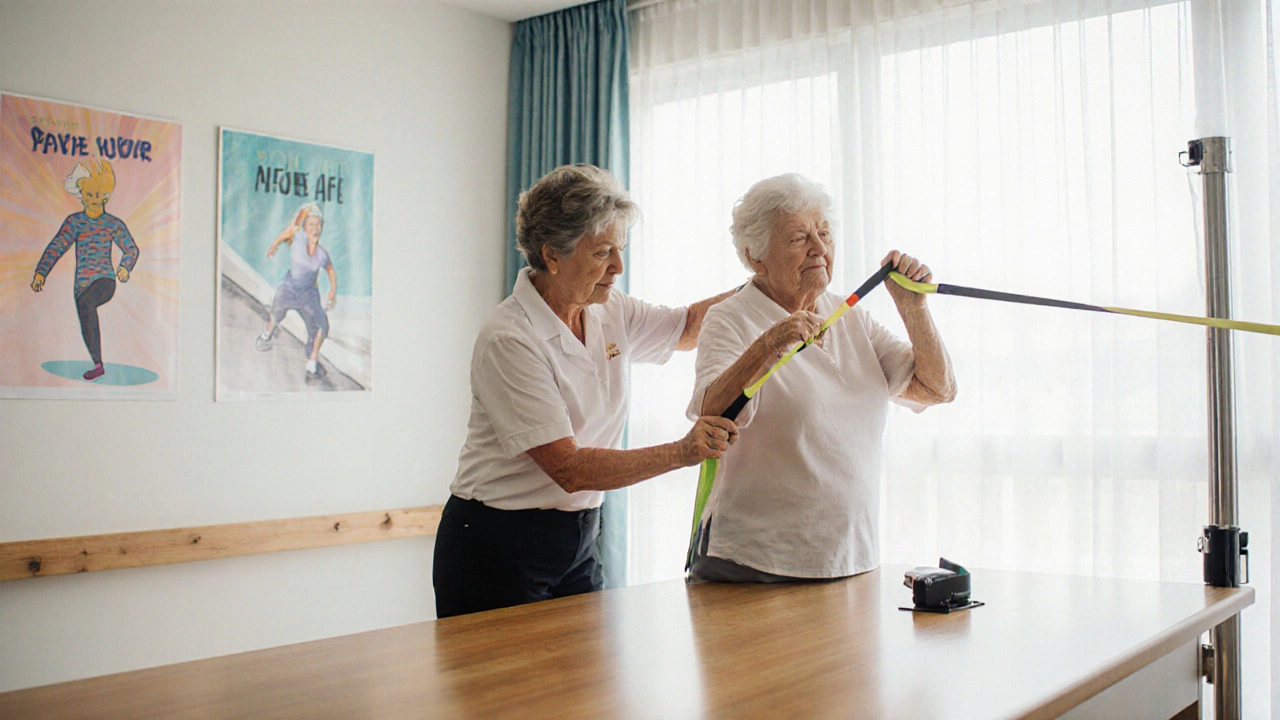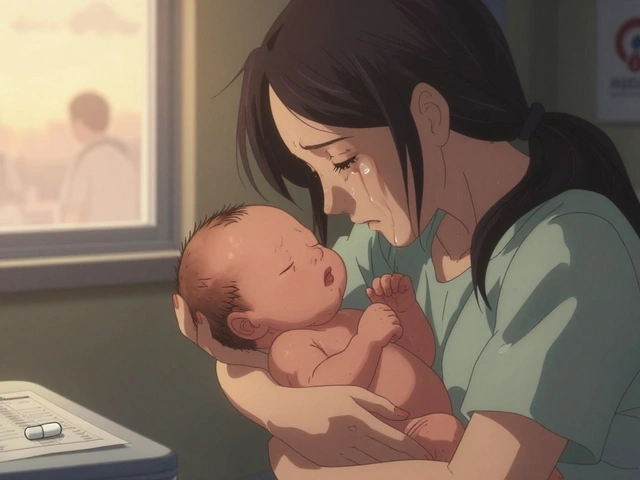Senior Tendonitis Symptom Checker
Answer the following questions to assess your risk of tendonitis and determine whether you should seek medical attention.
Do you experience persistent pain or discomfort in a tendon area (e.g., wrist, heel, shoulder)?
Have you noticed swelling or a tight feeling around the affected joint?
Does the pain worsen with movement or activity?
Have you had this issue for more than one week despite rest?
Do you have a history of diabetes, rheumatoid arthritis, or long-term steroid use?
Imagine a simple walk to the mailbox turning painful because the tendons in your wrist or heel protest with sharp, lingering aches. That’s tendonitis hitting the aging population hard, and it’s more than just an inconvenience-it can limit independence and quality of life.
TL;DR
- Age‑related tendon degeneration and repetitive strain are the main triggers.
- Common signs include localized pain, swelling, and reduced movement.
- Early rest, ice, and targeted exercises often resolve mild cases.
- Medications, physical therapy, and injections help moderate to severe flare‑ups.
- Stay active, maintain healthy weight, and address comorbidities to prevent recurrence.
What Is Tendonitis?
Tendonitis is an inflammation of a tendon, the fibrous cord that connects muscle to bone, typically caused by overuse, micro‑tears, or age‑related degeneration. It can affect any tendon, but the shoulder, elbow, wrist, knee, and Achilles are the usual suspects.
Why Seniors Face Higher Risk
Older adults experience a blend of structural and lifestyle factors that make tendons more vulnerable:
- Collagen loss: After age 40, collagen synthesis drops by about 1% per year, weakening tendon fibers.
- Reduced blood flow: Micro‑circulation in tendon tissue declines, slowing repair.
- Comorbid conditions: Diabetes, rheumatoid arthritis, and thyroid disorders impair tendon health.
- Medication side‑effects: Long‑term corticosteroid use can thin tendons.
- Repetitive activities: Gardening, knitting, or frequent walking on uneven surfaces add cumulative strain.
These elements combine into a perfect storm where even modest activities provoke inflammation.
Spotting the Symptoms
Early recognition can prevent chronic damage. Look for:
- Persistent, dull ache that worsens with movement.
- Localized swelling or a tight feeling around the joint.
- Morning stiffness that eases after a few minutes of motion.
- Reduced strength-gripping a jar or rising onto tiptoes feels harder.
- Occasional clicking or popping noises during activity.
If pain lingers beyond a week despite rest, it’s time to consider a professional evaluation.

How Doctors Diagnose Tendonitis
Diagnosis usually involves:
- Physical examination focusing on tenderness, range of motion, and functional tests.
- Imaging-ultrasound or MRI-to rule out tears or calcifications.
- Review of medical history to identify contributing illnesses or medications.
These steps help differentiate simple inflammation from more serious tendonopathies.
Treatment Options Compared
| Treatment | Effectiveness (Mild‑Severe) | Typical Duration | Key Risks / Side‑Effects | Best For |
|---|---|---|---|---|
| Rest & Ice | Low‑to‑moderate | 1‑2 weeks | Minimal | Acute flare‑ups, early stage |
| NSAIDs (e.g., ibuprofen) | Moderate | Up to 2 weeks | Stomach irritation, kidney strain | Patients without GI ulcers or renal issues |
| Physical Therapy | High | 4‑8 weeks | Temporary soreness | Chronic cases, post‑immobilization |
| Corticosteroid Injection | High (short‑term) | 1‑3 months relief | Tendon weakening, skin depigmentation | Severe pain not responding to NSAIDs |
| Platelet‑Rich Plasma (PRP) | Moderate‑to‑high | Multiple sessions over 3‑6 months | Injection site pain | Patients seeking non‑steroid options |
| Surgery | Very high (when needed) | Recovery 3‑6 months | Infection, scar tissue | Complete tendon rupture or recalcitrant cases |
Most seniors start with conservative measures-rest, ice, and NSAIDs-then graduate to physical therapy or injections if improvement stalls.
Practical Lifestyle Tweaks
Daily habits can keep tendons resilient:
- Gentle stretching each morning-focus on calves, wrists, and shoulders.
- Maintain a healthy weight; excess pounds increase load on lower‑body tendons.
- Incorporate low‑impact cardio (walking, swimming) to improve circulation.
- Use ergonomic tools-long‑handled garden tools, cushioned shoe inserts-to reduce repetitive strain.
- Manage blood‑sugar levels; stable glucose supports tendon repair.
Even small adjustments can cut flare‑up frequency by up to 40% according to a 2023 gerontology study.
When to Seek Professional Care
If any of these red flags appear, book an appointment promptly:
- Pain persisting beyond two weeks despite rest.
- Visible bruising or a sudden “pop” during activity.
- Loss of function that interferes with daily tasks.
- History of diabetes, rheumatoid arthritis, or long‑term steroid use.
Early intervention often means a quicker return to independence.
Frequently Asked Questions
Can tendonitis heal on its own?
Mild cases often improve with rest, ice, and over‑the‑counter anti‑inflammatories within a couple of weeks. However, without proper rehab, the tendon may remain weak and prone to future injuries.
Are NSAIDs safe for seniors?
Short‑term use is generally safe, but doctors must screen for stomach ulcers, kidney disease, and blood‑thinning medications. Alternatives like acetaminophen or topical NSAIDs can reduce systemic risk.
How many physical‑therapy sessions are needed?
Most programs schedule 1‑2 sessions per week for 4‑8 weeks, combined with a home‑exercise regimen. Progress is gauged by pain reduction and restored range of motion.
Is surgery a last‑resort option?
Surgery is typically reserved for complete tears, chronic cases unresponsive to conservative care, or when the tendon has degenerated severely. Minimally invasive techniques have lowered recovery times, but the decision rests on functional loss and overall health.
Can I prevent tendonitis without eliminating my hobbies?
Absolutely. Adjusting technique, using supportive gear, and integrating regular stretching can let you garden, play golf, or knit while keeping tendons healthy.







Write a comment
Your email address will be restricted to us